Honor 400 Pro review: flagship performance for less
Honor's latest is a camera-heavy mid-ranger looking to challenge flagships

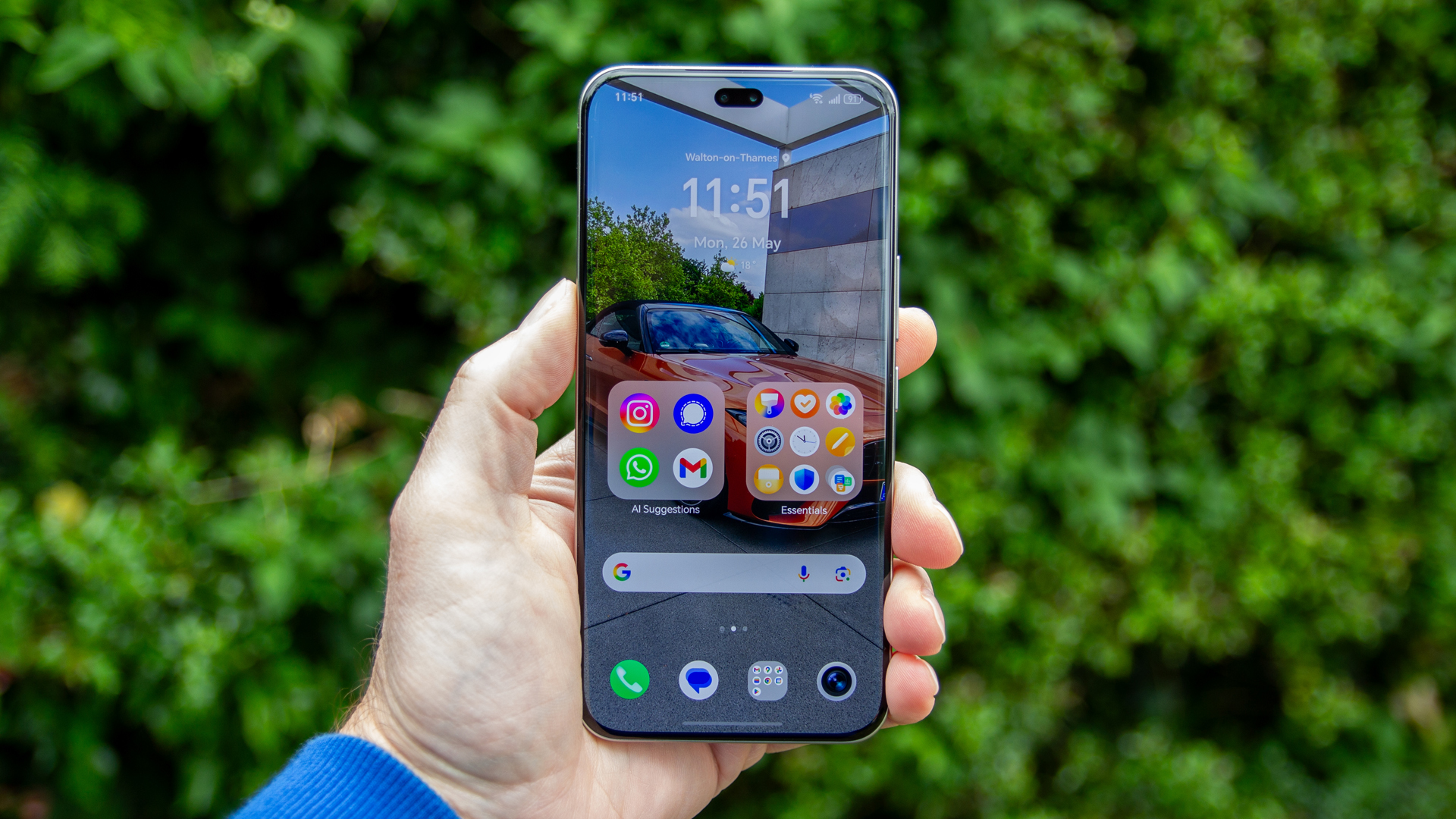
The Honor 400 Pro is a sub-flagship model with specs to beat some of the best – but at a price that’s appealing. There’s great performance and battery life, paired with fast-charging, and a display that really shines. The comprehensive camera system has some shortcomings, mind, and the software experience might divide opinion, but Honor's latest is a really solid handset for this kind of money.
-
+
Flagship performance and charging
-
+
Great battery life
-
+
Lovely display
-
-
Design is likely a little divisive
-
-
Overprocessing in images
-
-
Bloatware inclusion
Why you can trust T3

It might feel as though Honor is on something of a march, fleshing out its range of phones at an incredible pace. We first saw the Honor Magic 7 Pro launch at the beginning of 2025, then came the Honor 400 Lite, and now we’re looking at the Honor 400 Pro (launching alongside the Honor 400).
What happened to the Honor 300 Pro you might ask? The Honor 300 series launched in China in December 2024, but didn’t make it much further. So now we find ourselves with the Honor 400 Pro, the spiritual successor to the Honor 200 Pro.
The Honor 400 Pro is a sub-flagship model, pitched as a camera-heavy phone to challenge many of the flagship devices both on performance and price. But does it achieve that?
How much does the Honor 400 Pro cost?
The Honor 400 Pro launches at £699.99 for 12GB RAM and 512GB storage. Other variants may be available, but that’s all that we’re getting in the UK. In Europe it costs €799.90.
There are early buying incentives, with a discount code to get £/€150 off, as well as a range of gifts – including a 100W SuperCharge power supply – but this offer only runs until 6 June on Honor.com.
It’s available in two colours: Lunar Grey and Midnight Black.
What’s new in the Honor 400 Pro?
- New 200MP main camera
- 5000-nit display
- Snapdragon 8 Gen 3
- 6 years of software updates
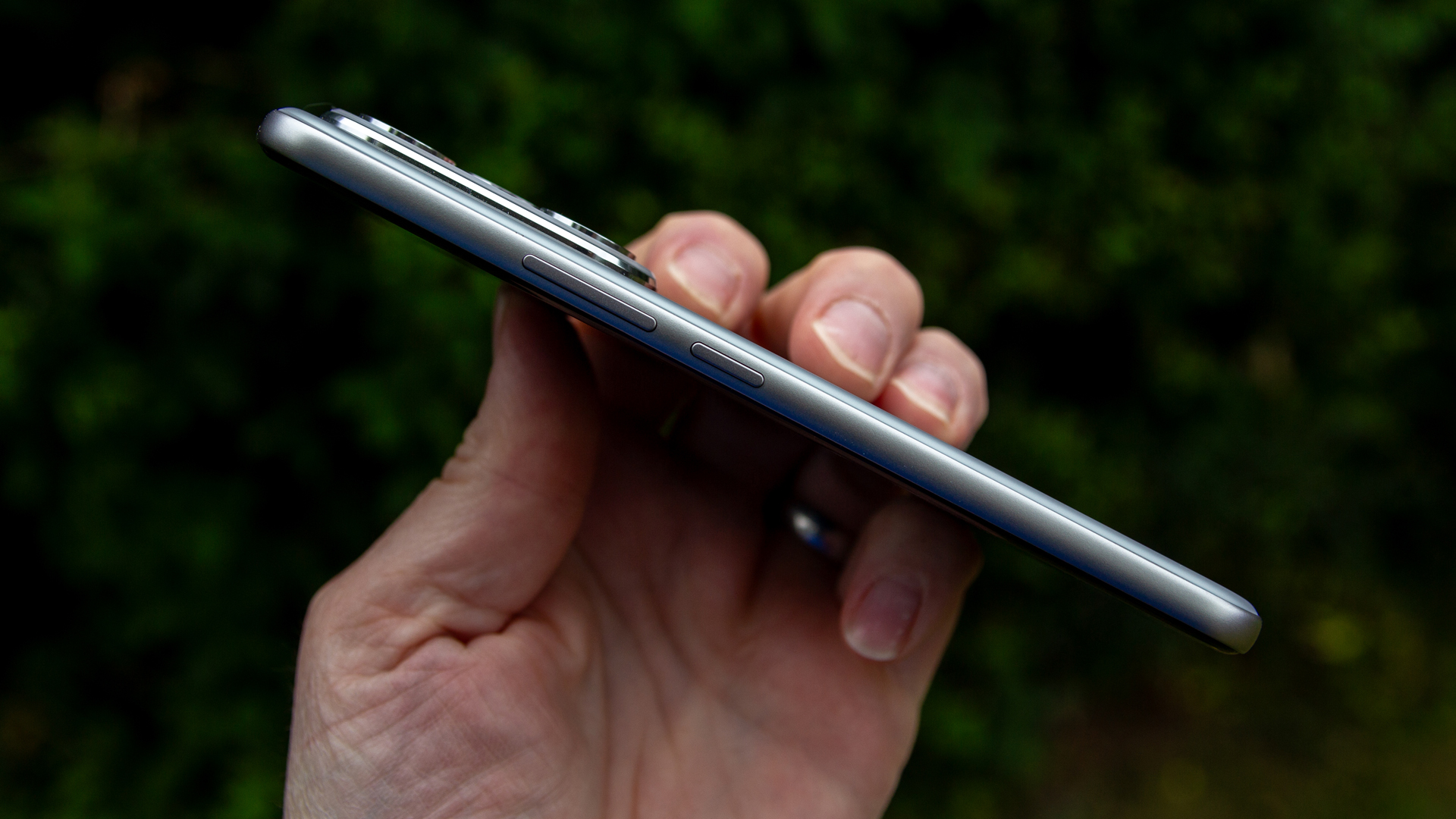
There’s a refreshed design separating the Honor 400 Pro and the Honor 200 Pro with a new camera surround. The camera load-out is different too, most notably with the addition of a 200-megapixel main camera, replacing the 50-megapixel main camera of the previous phone.
Get all the latest news, reviews, deals and buying guides on gorgeous tech, home and active products from the T3 experts
The display has been boosted to 5000-nits, one of the brightest displays you’ll find on a phone. It’s powered by the Snapdragon 8 Gen 3, so it moves up a power band compared to the 200 Pro. This is flagship-grade hardware, but a year old. There’s also a slightly larger capacity battery generation to generation.
Elsewhere, Honor is offering a 6-year update promise on this phone, compared to three OS updates and 4-years of security updates, which is quite the change. The 400 Pro also comes with a variety of new software features, although some of these could come to the earlier Honor 200 Pro too.
Does the Honor 400 Pro's design work?
- 8.1mm thick
- Weighs: 205g
- IP68 and IP69 protection

The Honor 400 Pro eschews one of the biggest trends on phone designs right now, which is a squared frame and flat front and back. While Sony was doing this on Xperia phones for what seems like forever, it was the iPhone 12 in 2020 that set the tone for all the similar phone designs we see now.
On one hand, the Honor 400 Pro looks unique, but to some, it might look like it’s stuck in the past. There’s a slight curve to the metal frame, and curves to the glass, both front and back, rather than the squared angular looks that we’ve come to expect. The same is true of the Honor Magic 7 Pro, the company’s flagship phone.
The camera array on the back presents three lenses, laid out in triangular fashion, but before you say it’s just copying Apple, they sit on a slightly random-shaped housing. This is ringed (on my sample model) with a chrome band, etched with the words “200MP AI CAMERA”.
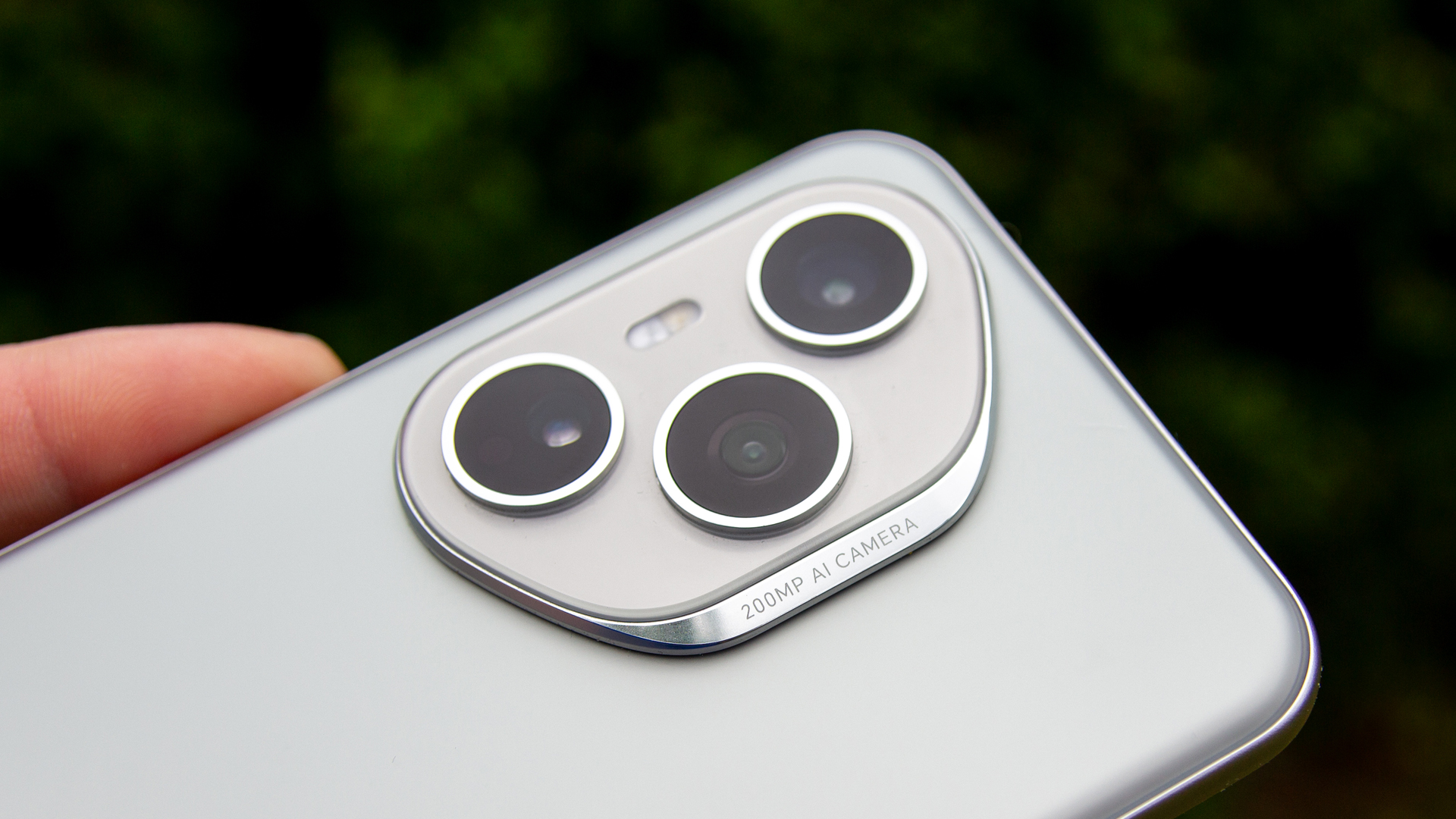
It’s perhaps a little kitsch, slightly less industrial and a little more decorative than we’re used to seeing on phones, but I’m not going to try to predict whether you think it looks nice or not.
One thing that is nice, however, is the ramping up of protection: this phone offers IP68 resistance (covering you against immersion in water) as well as IP69 (which gives you protection against high-pressure water jets). Honor isn’t alone in offering this, though, with phones as cheap as the Motorola Edge 60 Fusion offering the same.
While I’ve said that the design is perhaps a little soft and curvy by modern standards, it does make the 8.1mm a little easier to grip than similarly sized phones with sharp squared frames.
How good is the Honor 400 Pro's display?
- 6.7-inch AMOLED panel
- 2800 x 1280, 460ppi
- 5000-nits max

Honor has thrown 5000-nits behind the 400 Pro’s display, making it one of the brightest phones you can buy. But it’s not accurate to equate peak brightness to the accessible brightness. When you knock the brightness up to full power it’s not the full measurement.
Instead, that peak brightness only really comes through wehn viewing content that’s HDR-enabled, as it’s the highlights of those HDR scenes that really get the treatment. That firstly comes through in photos – when viewing your pics in Honor’s native Gallery app – which I’ll come back to, because there’s more to say on that.
There’s support for HDR10+, a format that’s becoming a richer source of content thanks to its adoption by Netflix and in other best streaming services, such as Amazon Prime Video.
Otherwise, this is an AMOLED display that’s rich and vibrant, with options to tweak the colouration to your preference. It’s also a 120Hz display, so scrolling is nice and smooth, while it offers a couple of other features too.
I particularly like the Motion Sickness Relief feature, which isn’t strictly a display feature, but is a useful option for anyone using their device on the move who is prone to travel sickness. I’ve written separately about this feature – and while a native version is expected to land on Android soon, it’s great to have first on the Honor 400 Pro.
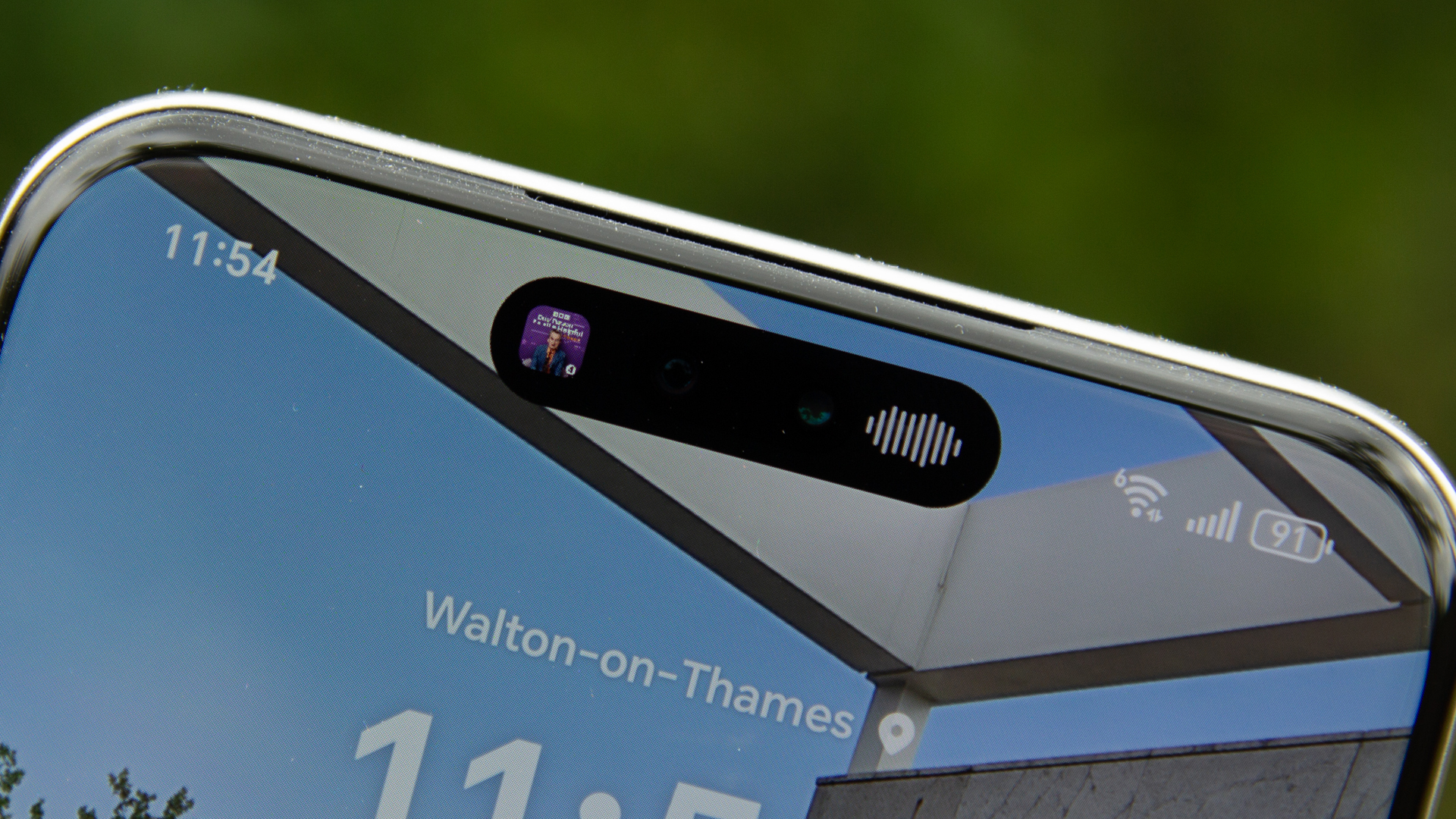
From a design perspective, I mentioned that there’s a little more curve to the display than you might find on contemporary rivals like the Samsung Galaxy S25 Plus, but it’s not as extreme as something like the Motorola Edge 60 Pro. While some might find it’s not as well suited to gaming, where touch points are more important, I didn’t find it to cause me any problems.
One minor thing is the double camera arrangement set into the screen. This can cut into content (some game options were inaccessible, for example), but Honor has adopted a system similar to Apple's Dynamic Island, where some apps make better use of this area – such as when playing music.
How powerful is the Honor 400 Pro?
- Snapdragon 8 Gen 3, 12GB RAM / 512GB storage
- 5300mAh silicon-carbon battery
- 100W Honor Super Charge
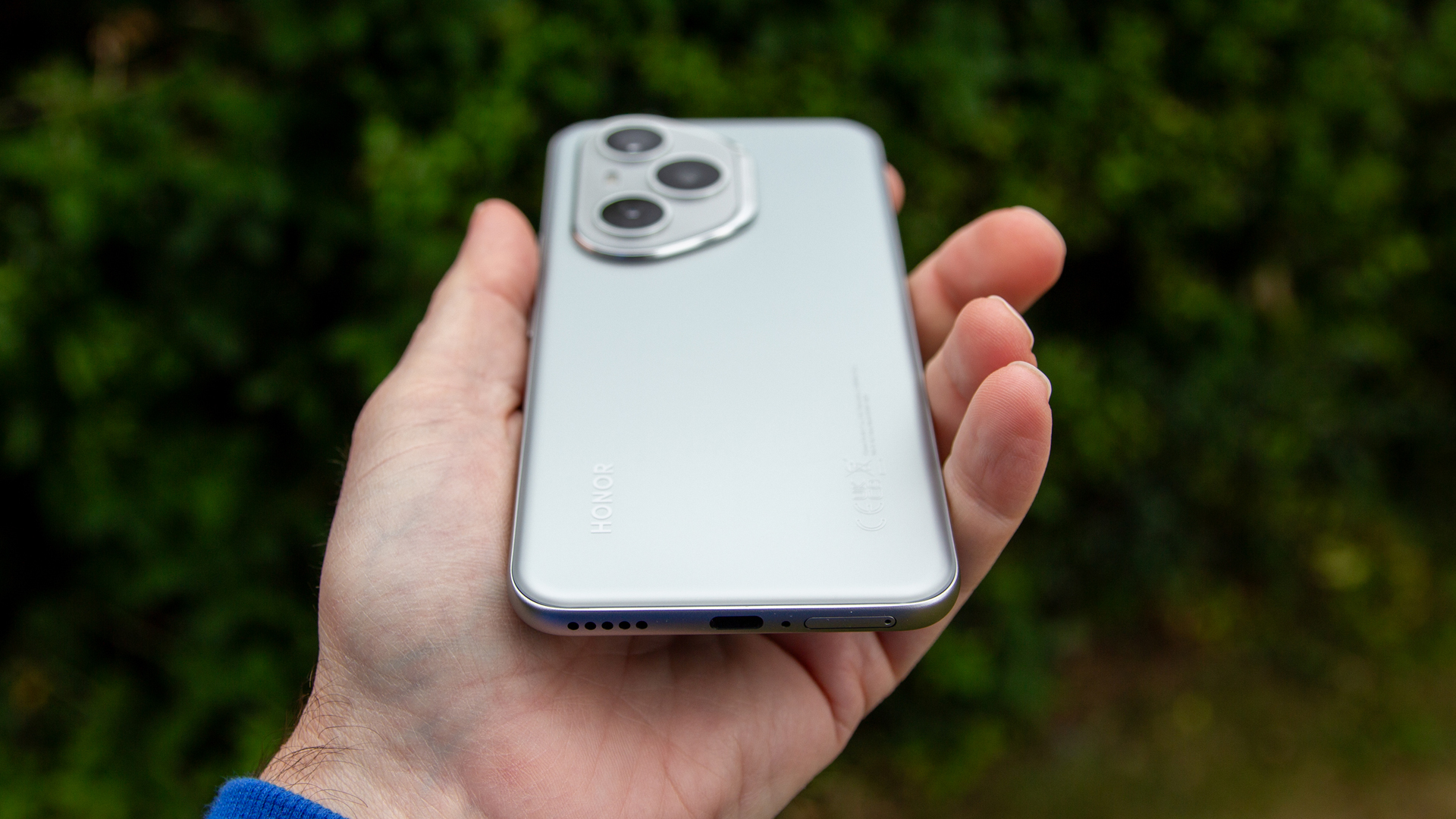
The Snapdragon 8 Gen 3 that powers this device is flagship level from 2024, so even through this phone launches into a sub-flagship position, the performance is very much the same as you’d find on a top-level device. That marks the Honor 400 Pro out as good value for money and a great starting point.
I've found the performance to be really slick and smooth – and even with long gaming sessions, I haven't found this handset to warm up.
This is backed by solid battery life, with the 5300mAh cell being a high capacity, thanks to the use of silicon-carbon tech that allows for a higher energy density. It’s a great performer too: I found the battery to last easily through the day without any troubles, while the charging is excellent too.
There’s support for up to 100W wired charging, which you might be able to access if you have a compatible charger already – as there isn’t one in the box. Of course, there’s a range of options to slow things down and manage that charge – as well as various options to protect the battery and reduce decay.
There’s also support for 50W wireless charging, but again, you’ll have to have a compatible charger.
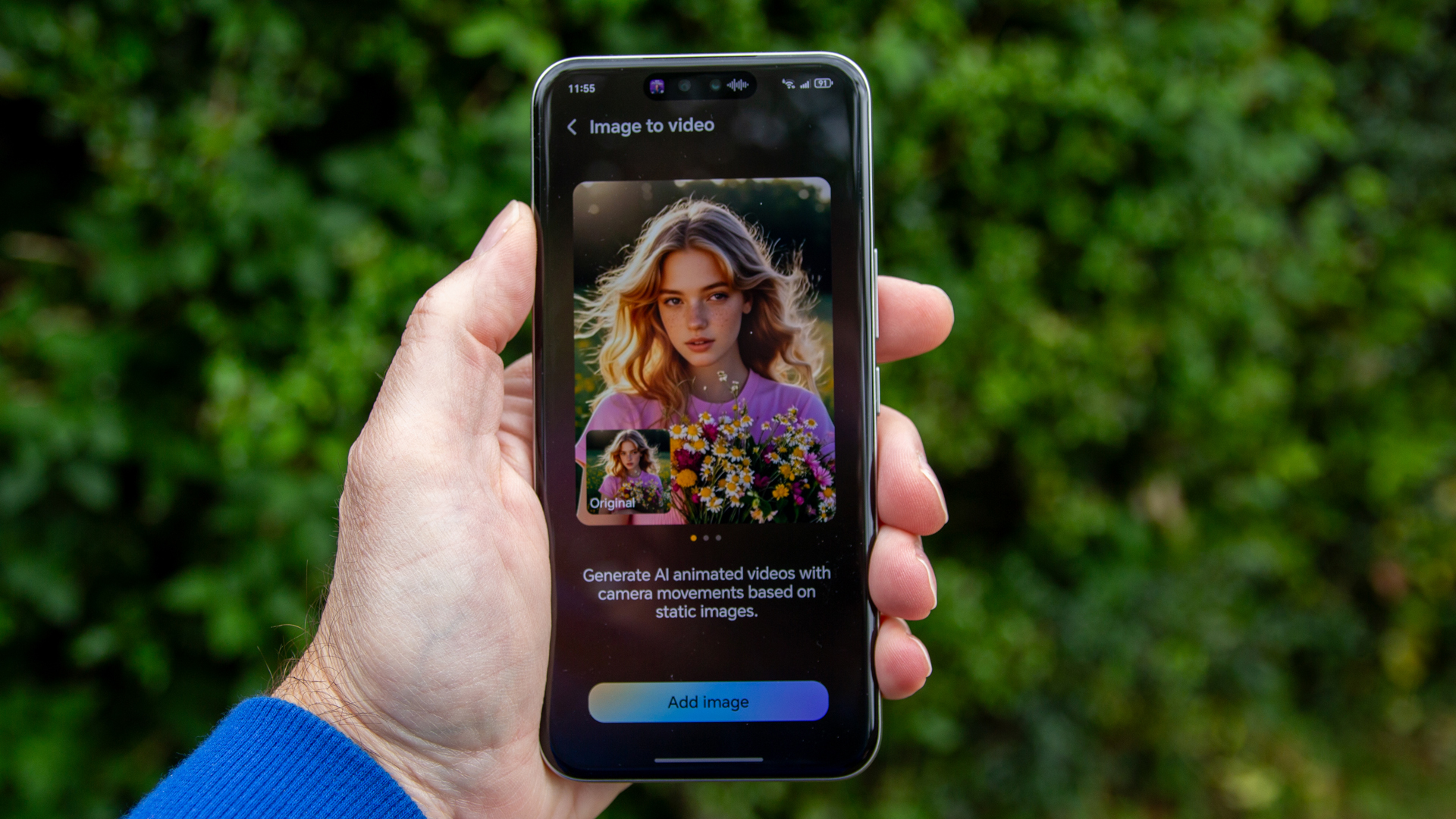
From a hardware and performance perspective, there’s little to criticise, but the software experience isn’t as clean. Honor is known for its heavy-handed reworking of Google's Android – and that’s true here.
There are plenty of apps that bloat the system, there’s duplication of apps stores, and of the default keyboard – emoji keyboard – which just isn’t as good as Google’s stock G Board.
The clock, the calendar, contacts and phone app are all switched to Honor alternatives, but it’s easy enough to switch back if that's your preference.
On the positive side, there’s plenty of customisation in MagicOS, and this offers some of the features we’re expecting to see land in Android 16. But there’s also a lot more going on that takes some time to tame.
There’s a heap of AI functions, including the expected translations, and even some bundling together of features that I wouldn’t really consider to be AI. The apps suggestion function elevates commonly used apps to the home screen, which is useful, but something that Google Pixel has been doing for years without suggesting it’s AI-powered.
There’s access to Google Gemini, of course, and for all the changes that Honor has wrought over Android, it’s not too hard to calm things down and get a nice smooth experience.
Is the Honor 400 Pro's 200MP camera any good?
- 200MP main, f/1.9 aperture, optical stabilisation (OIS)
- 50MP telephoto, f/2.4, 3x, OIS
- 12MP ultrawide, f/2.2
- 50MP selfie camera
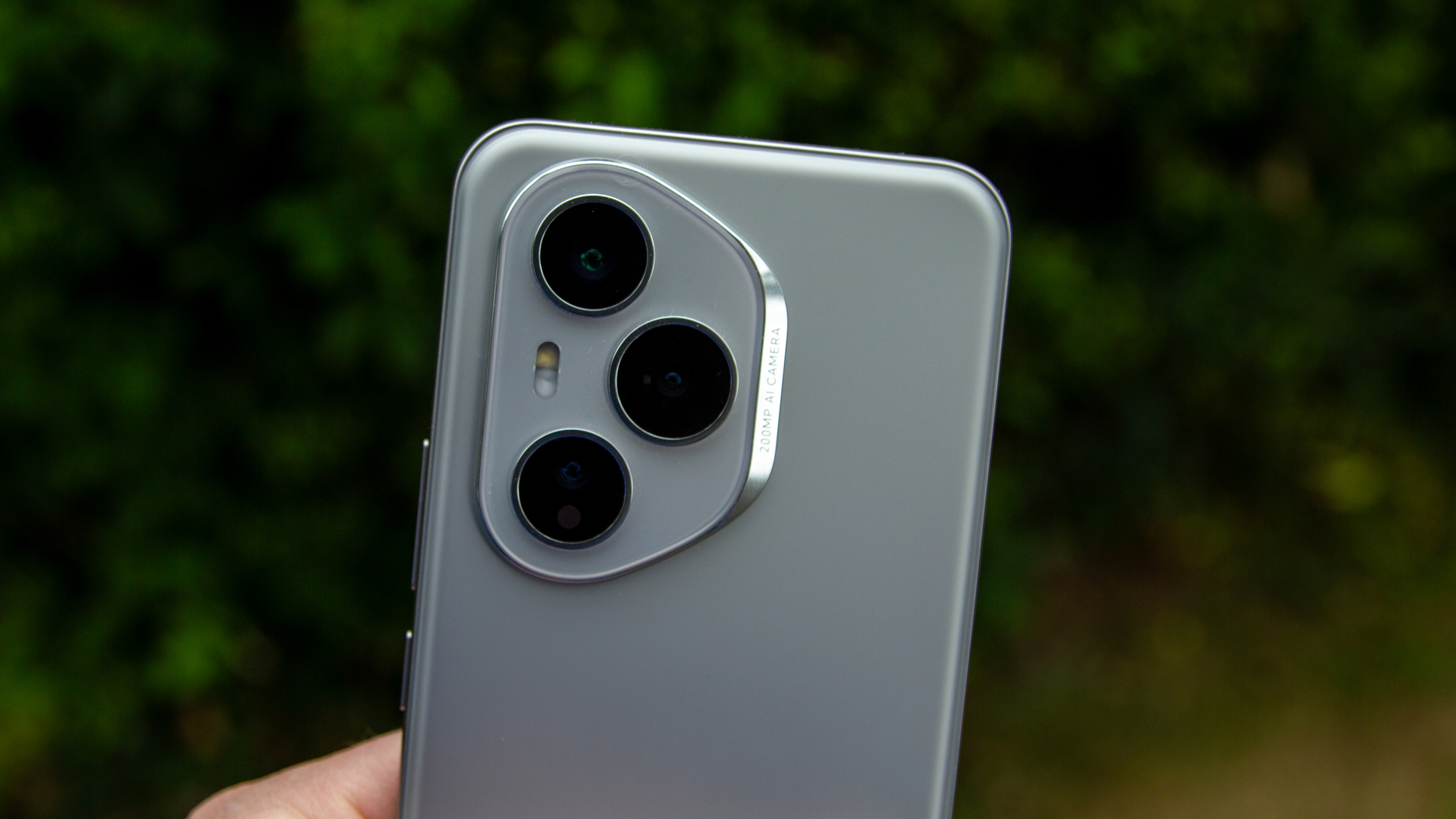
Honor hits the spec sheet hard with a 200-megapixel main camera, offering a large sensor and fast f/1.9 aperture.
This main camera is capable of some great results, often giving great colours and realism. These images can be brighter than some rivals – I tested it against the Pixel 9 Pro XL – and while bright images are good, that can lead to over-exposure in some shots, reducing the impact of a nice contrasty photo.
This can be seen as you skip across the available lenses, from ultrawide to telephoto, where the main camera lightens shadows, while the other lenses don’t – which leads to less contrasty photos. That means there's also inconsistency between the results you'll get from each lens.





Really bright scenes can suffer and get a bit washed out, lens flare is common when shooting close to the sun, while HDR images can be brightened too much and lose the contrast – especially when compared to something like the Pixel. I also found myself taking some shots twice, because the first appeared to have metered badly. Ultimately, therefore, it's a camera system that can be inconsistent.
Interestingly, Honor’s Gallery app appears to apply some sort of correction filter, as some images I’ve taken appear more contrasty when viewing. But take those images out of the Honor environment – i.e., if you share it or view it in Google Photos – and things don't look so rosy.
While talking about the Gallery app, it’s also the only place that Honor’s photo will get that HDR pop (where the highlights really ramp up and look great). Most phones will offer that through Google Photos, but for some reason, Honor’s photos don’t.
Similarly, if you view your photos from an Honor phone on another phone, that ramping up of HDR doesn’t happen. That makes me think something a little odd is happening around the Honor Gallery and how HDR information is used.



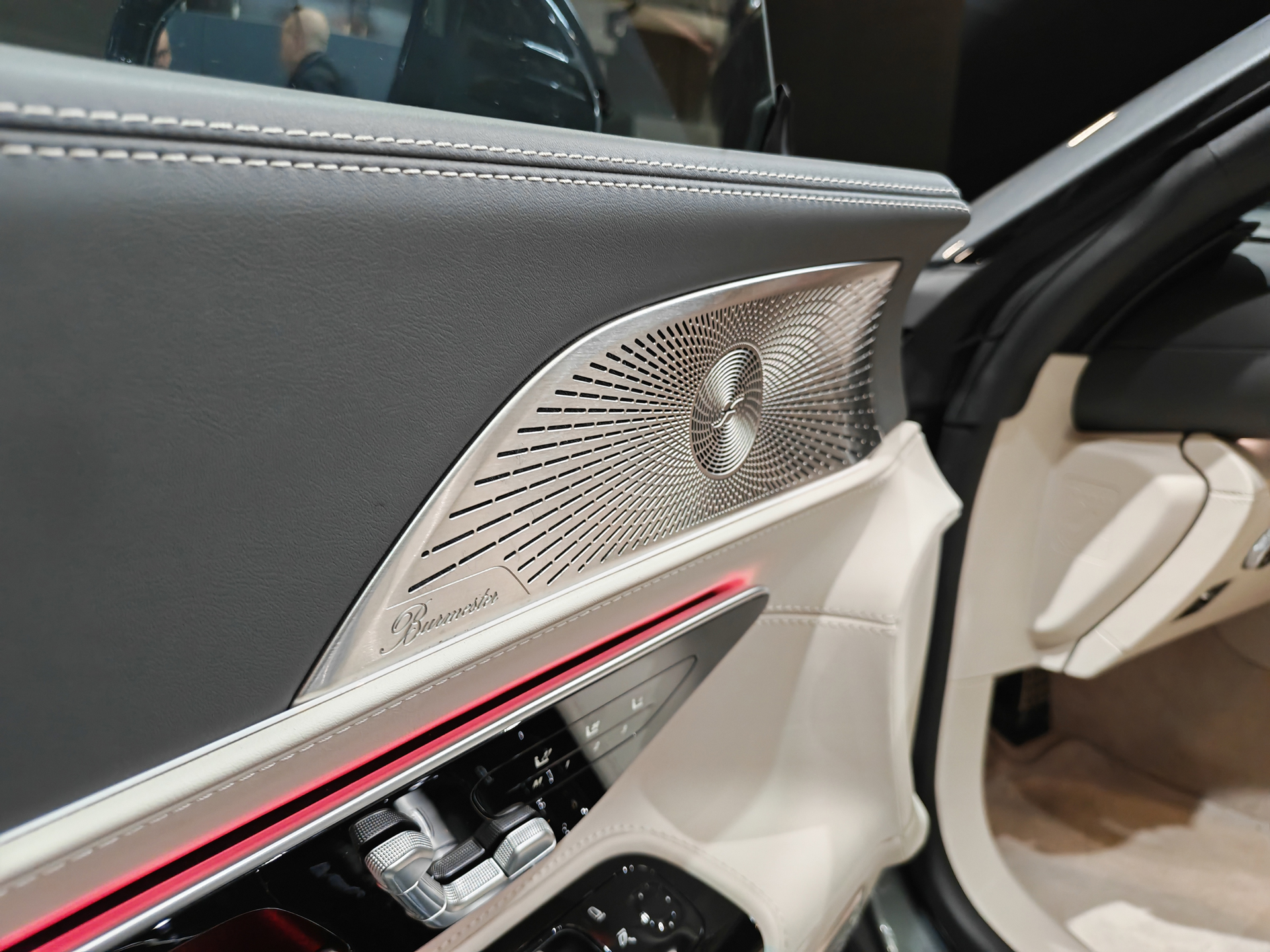




The main camera is supported by a 50-megapixel telephoto camera, which is natively 3x zoom, but offers digital zoom out to 50x.
As you might expect, the results are pretty limited at longer ranges, but once you get over 15x, you’ll get the option for AI enhancement. Just as we saw on the Honor Magic 7 Pro – and from phones like the Xiaomi 15 – this can analyse your image and create a cleaner version.
Some surfaces work better than others (it’s bad for people or words), but on natural surfaces, like greenery, you’ll get sharpening that generally looks okay. Look in detail and you’ll find things like bark patterns on trees that don’t exist, veins in leaves that weren’t there, and so on. But used sparingly, you might be able to take a photo that’s initially really soft and get AI to produce some sort of usable image from it. Personally, I’d prefer not to use it – but it’s fun for a while.


To access some of the AI photography features you’ll need to use the Honor Gallery, including the scary Image to Video feature. This will literally create a short video from any photo you feed it.
It’s only a limited trial (I expect you’ll have to pay for it in the future), but the results are surprisingly good, realistic – and 100% fake, of course. Feed a photo of a person into it and that photo will come to life as though it's talking; give it a photo of a car and it'll pan slightly, showing parts of the car that aren't in the original image.
As a collection of cameras, it’s worth considering that the Honor has the same main and ultrawide cameras as many flagships for quite a bit less money. Its performance isn't always quite so flagship-grade, but there's plenty to play with and great value to be had.
Verdict

The Honor 400 Pro offers good value for money when you consider the power and performance on board. This is flagship-grade hardware, albeit a year old, but for way less than you’d be paying for a top-level phone. The battery life and charging stand out, the display is great, and it's an enjoyable phone to use.
The software support is appreciated, but it takes some time to undo the changes and additions that Honor puts in place compared to stock Google Android. It’s a long way from that native experience, and there’s lot of bloat and duplication, but that can be undone, switched around and generally made better.
The camera plays a numbers game in this phone – and I’m not totally sold on it, especially as the best experience lies within Honor Gallery when viewing photos. But, given the price, it’s hard to complain too much – and I’ve enjoyed the day-to-day experience in the Honor 400 Pro.
Also consider
The Honor 400 Pro sits in a competitive space, with the likes of the new Moto Edge 60 Pro being a great competitor based on the price, but offers a larger capacity battery. It also has a software experience that’s closer to Android.
The Poco F7 Ultra offers more power for a slightly lower price, but might require a little more working to get the software tamed – and doesn’t have quite the same camera offering.

Chris has been writing about consumer tech for over 15 years. Formerly the Editor-in-Chief of Pocket-lint, he's covered just about every product launched, witnessed the birth of Android, the evolution of 5G, and the drive towards electric cars. You name it and Chris has written about it, driven it or reviewed it. Now working as a freelance technology expert, Chris' experience sees him covering all aspects of smartphones, smart homes and anything else connected. Chris has been published in titles as diverse as Computer Active and Autocar, and regularly appears on BBC News, BBC Radio, Sky, Monocle and Times Radio. He was once even on The Apprentice... but we don't talk about that.
You must confirm your public display name before commenting
Please logout and then login again, you will then be prompted to enter your display name.